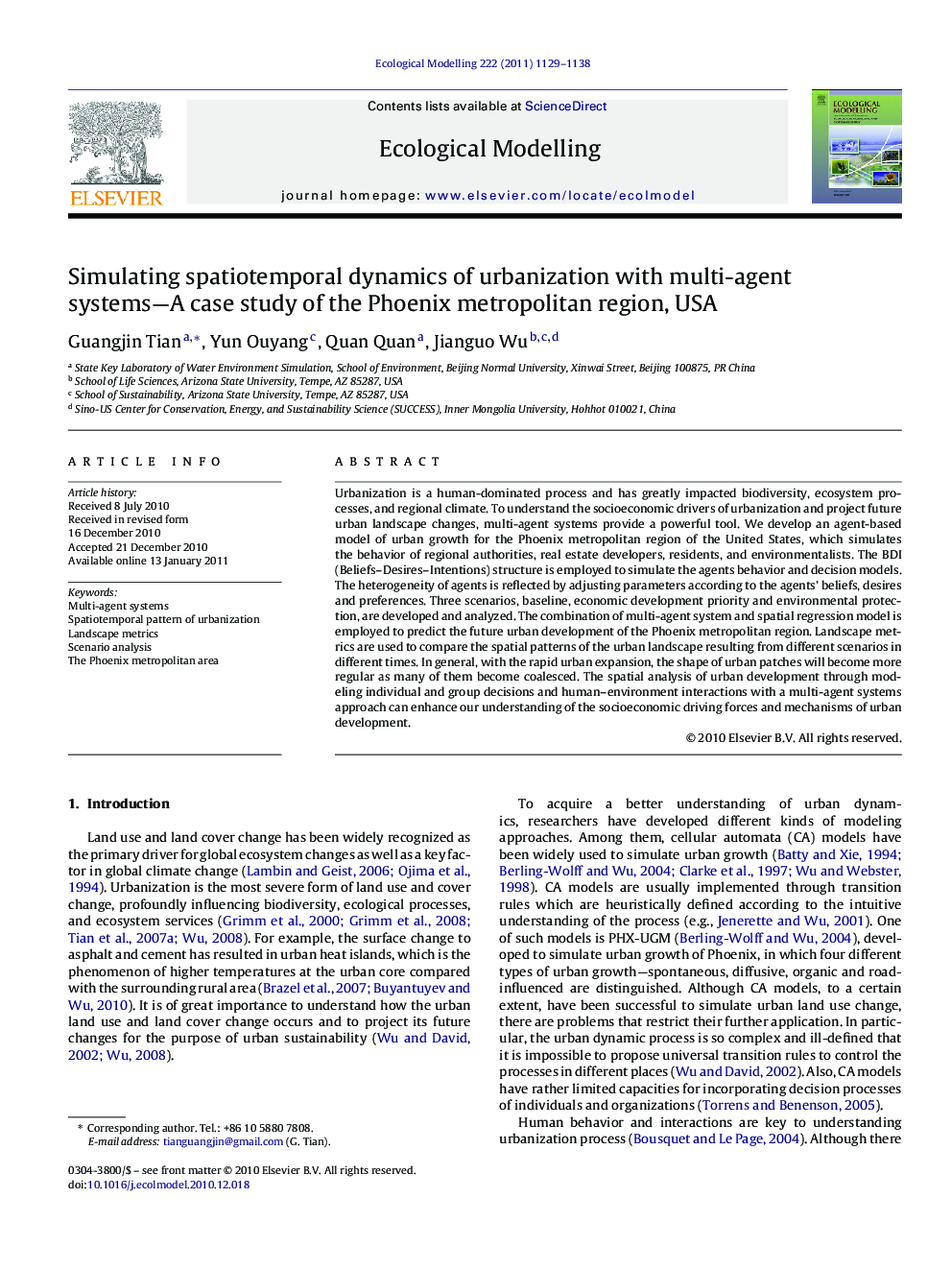| کد مقاله | کد نشریه | سال انتشار | مقاله انگلیسی | نسخه تمام متن |
|---|---|---|---|---|
| 4377187 | 1303413 | 2011 | 10 صفحه PDF | دانلود رایگان |

Urbanization is a human-dominated process and has greatly impacted biodiversity, ecosystem processes, and regional climate. To understand the socioeconomic drivers of urbanization and project future urban landscape changes, multi-agent systems provide a powerful tool. We develop an agent-based model of urban growth for the Phoenix metropolitan region of the United States, which simulates the behavior of regional authorities, real estate developers, residents, and environmentalists. The BDI (Beliefs–Desires–Intentions) structure is employed to simulate the agents behavior and decision models. The heterogeneity of agents is reflected by adjusting parameters according to the agents’ beliefs, desires and preferences. Three scenarios, baseline, economic development priority and environmental protection, are developed and analyzed. The combination of multi-agent system and spatial regression model is employed to predict the future urban development of the Phoenix metropolitan region. Landscape metrics are used to compare the spatial patterns of the urban landscape resulting from different scenarios in different times. In general, with the rapid urban expansion, the shape of urban patches will become more regular as many of them become coalesced. The spatial analysis of urban development through modeling individual and group decisions and human–environment interactions with a multi-agent systems approach can enhance our understanding of the socioeconomic driving forces and mechanisms of urban development.
Research highlights▶ We develop an agent-based model of urban growth for the Phoenix metropolitan region of the United States by the BDI (Beliefs–Desires–Intentions) structure. It simulates the behavior of regional authorities, real estate developers, residents, and environmentalists. ▶ Three scenarios, baseline, economic development priority and environmental protection, are developed and analyzed. The combination of multi-agent system and spatial regression model is employed to predict the future urban development of the Phoenix metropolitan region. Landscape metrics are used to compare the spatial patterns of the urban landscape resulting from different scenarios in different times. ▶ The spatial analysis of urban development through modeling individual and group decisions and human–environment interactions with a multi-agent systems approach can enhance our understanding of the socioeconomic driving forces and mechanisms of urban development.
Journal: Ecological Modelling - Volume 222, Issue 5, 10 March 2011, Pages 1129–1138